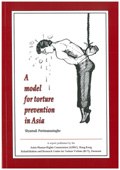 “I had the privilege of addressing about 100 Inspectors on “Investigation techniques to minimize violation of human rights” at a police training programme conducted by the United Nations Development Programme (UNDP) in early July this year.
“I had the privilege of addressing about 100 Inspectors on “Investigation techniques to minimize violation of human rights” at a police training programme conducted by the United Nations Development Programme (UNDP) in early July this year.
When I asked these officers their opinion of human rights, especially the aspect of torture, their observations were that they had to resort to use of force to solve cases due to the following reasons:
- Sense of shame and loss of face if they fail to solve the case by recovering the weapon of the offence or the fruits of the crime, where there were several eyewitnesses testifying against the suspect;
- Lack of resources – personnel/vehicles, equipment etc. to pursue investigations;
- The period of custody of 24 hours being insufficient;
- Pressure from superiors to solve cases, with the implication that the consequences of non-compliance or failure to successfully complete investigations within the time limit would result in unfavourable reports to their personnel file or other strictures, which would adversely affect their career prospects.
After listening to their response, I posed the question whether they had ever carried out acts that could be classified as torture, or whether they had heard of torture being perpetrated on members of the privileged classes such as politicians, the rich and persons of high standing in society, notwithstanding accusations or evidence to believe that such persons had been concerned in murder, sometimes multiple murders, fraud involving millions of rupees, rape and other such serious crime; whether force had been used on such serious crime; whether force had been used on such persons to extort information or evidence relevant to the crime committed; whether force, or physical intimidation had been used to obtain information on the weapons used for the murders or to trace the stolen/defrauded loot. The answer was negative.
When I asked them whether I was incorrect in saying that in almost all the instances of torture in police custody, the victims were the poor, the destitute and the defenseless, they sheepishly admitted it was so.
The irony of the situation is that torture had been directed against the weakest sections of society – the sections that needed the highest protection from the state.”
– D.I.G. J. Thangavelu –
The Sunday Times, August 7, 2005
* This book is temporarily Out of Stock. *
Published in October 2005 by the Asian Human Rights Commission (AHRC) & Rehabilitation and Research Centre for Torture Victims (RCT), 72 pages, Language: English;
ISBN: 962-8314-24-6; PID:AHRC-PUB-002-2005
For orders and enquiries: Email ahrc@ahrc.asia or call +(852) 2698 6339 +(852) 2698 6339.
Click here to download this publication in PDF format.